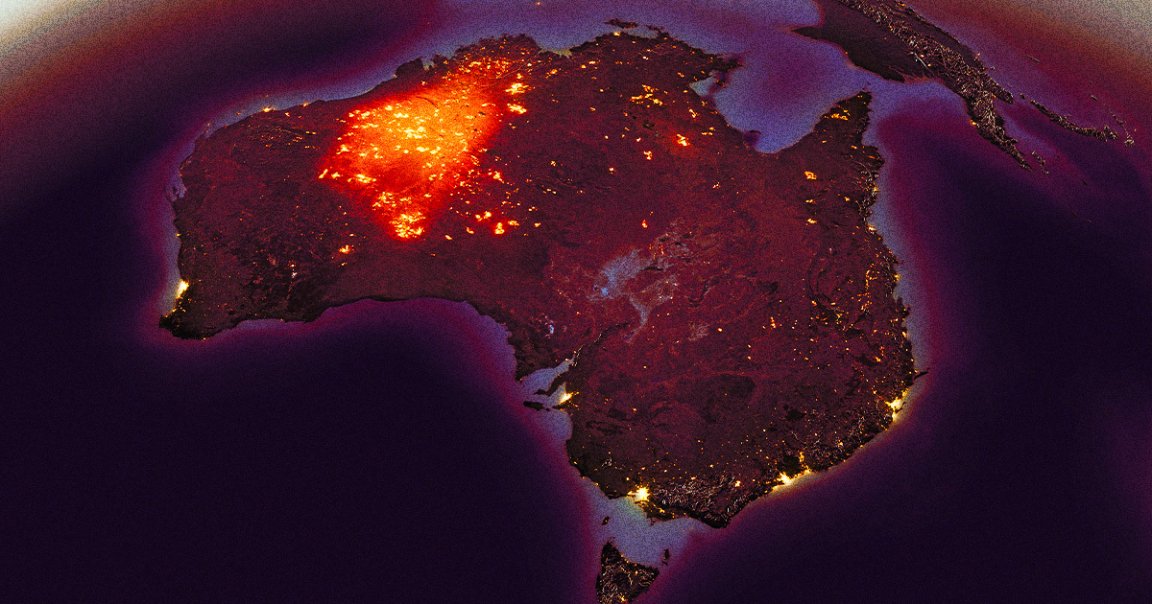
Concealed History
The landmass of Australia could be harboring a massive, subterranean secret.
In a new essay for The Conversation, geologist Andrew Glikson explains his latest research that indicates that an epic asteroid crater could be buried underneath the continent — and all the evidence points to it being the largest known on the planet, by a huge margin.
Known as the Deniliquin structure, Glikson estimates in his study, published in the journal Tectonophysics, that it’s over 320 miles in diameter. That would dwarf the largest confirmed impact structure, the approximately 100-mile-wide Vredefort Crater in South Africa, not to mention the similarly sized Chicxulub crater, believed to be from the asteroid that wiped out the dinosaurs.
“The history of Earth’s bombardment by asteroids is largely concealed,” Gilkson wrote.
Uplifting Geology
The Deniliquin structure’s existence was first proposed in the late 90s by Tony Yeates, who co-authored this latest study, based on magnetic patterns. A follow up analysis that wrapped up in 2020 confirmed that there was a large structure underneath a region in southern New South Wales, though without definitive proof it was caused by an impact.
You may ask: how does such a massive structure become buried beneath our feet, unnoticed?
As Glikson explains: “When an asteroid strikes, it creates a crater with an uplifted core. This is similar to how a drop of water splashes upward from a transient crater when you drop a pebble in a pool.”
“This central uplifted dome,” he adds, can erode over millions of years, becoming less prominent. If the crater isn’t simply buried by sediment, a collision between the Earth’s tectonic plates could also subsume the structure, as one colliding plate is forced beneath the other.
Along with the discovery of the dome, there are several other strong clues that identify the structure as an asteroid crater, such as symmetrical ripples in the crust that would be caused by the extreme temperatures of an impact, and “radial faults” commonly found in other impact structures.
Mass Extinction
Regrettably, most of the evidence gathered on the Deniliquin so far is only from the surface, and Glikson stresses the need for deep drilling to obtain “proof of impact.”
Nevertheless, his latest research suggests that the asteroid impact that created it occurred roughly 445 million years ago, coinciding with what’s known as the Late Ordovician mass extinction event that wiped out 85 percent of all life on Earth.
According to Glikson, it was more than double the scale of the dinosaurs’ extinction at the hands of the Chicxulub impact. One shudders to imagine the scale of gargantuan space rock that forged the Deniliquin.
More on geology: Scientists Intrigued by “Gravity Hole” at Bottom of Ocean